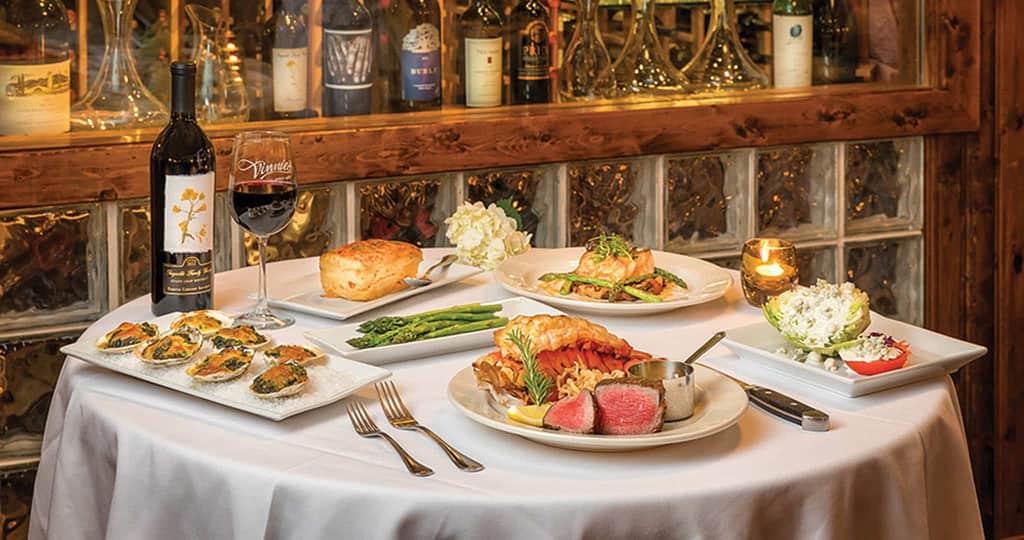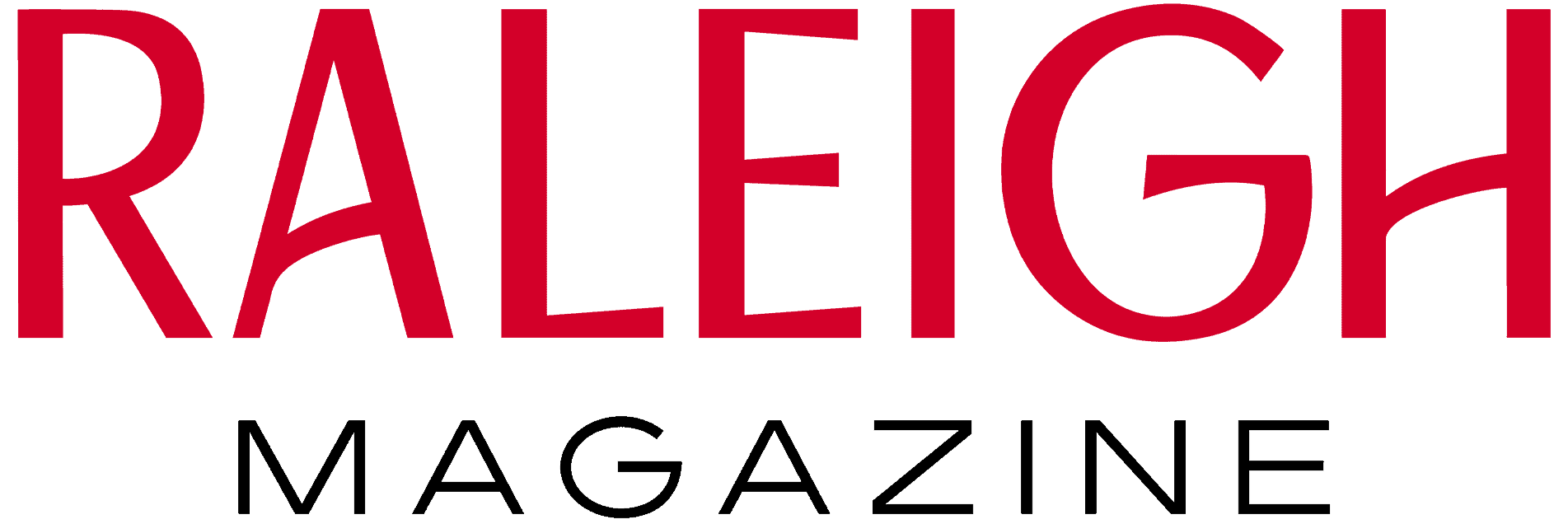Share this Post
Locally owned steakhouses seem to be a bit of an anomaly, as Raleigh boasts only three total. Now, as a new local powerhouse steakhouse is slated to take the scene by storm, we dig into the meat of the matter.
“Steakhouses are classic—it’s Americana,” says Emily Barefoot, manager of The Peddler and daughter of the original owner. And there’s just something about them that we associate with celebrations. Whether for a birthday, engagement, anniversary or any other big life event, a steakhouse is the go-to.
Steakhouses (and steak) are so symbolic in fact that they pervade even pop culture in their significance across endless iconic scenes, from John Candy memorably masticating fat and gristle in The Great Outdoors to the perfectly cooked ribeye in The Matrix to Goodfellas’ famed steak prison dinner scene (“medium rare?—hmm, an aristocrat”)—to, more recently, a breathless Andy Sachs (Anne Hathaway) bursting into a fancy steakhouse to pick up a steak for dictator boss Miranda Priestly to signify the prime beef’s supreme status via the ridiculousness of the ask. Read: Who gets $teak to go?
But it’s not just the steak. The atmosphere is a major draw—as is the nostalgia it invokes. The ambiance, the fare, the wine, the mood lighting, the white-apron service… they meld to create an experience unparalleled. And they draw on a very collective American experience. And, yet, locally owned steakhouses are, well, rare.
You may or may not know that a locally owned steakhouse has not opened in Raleigh since Reagan was president—or that Raleigh boasts only three, each very unique in identity. There’s the legendary Angus Barn, a literal barn to which people have been flocking for benchmark birthdays, engagements, retirements, company parties, date nights and beyond since it flung open its barn doors in 1960. Every Raleighite has a story there (Raleigh Magazine spent its last three Christmas parties there; our publisher recently celebrated a big birthday for one of her children there; and it’s even where our editor spent her sweet 16 back in the day). From the Wild Turkey Lounge to the meat locker and fire pit in the back, everyone has a favorite spot and memory at the Barn—its popularity proven by its status as one of the most profitable restaurants in the country according to Restaurant Business Magazine.

The Peddler has been serving aged-to-perfection steaks out of its original family-owned and -operated Glenwood Avenue location since 1969.
For a more saloon-style experience, there’s The Peddler, a family-owned and -operated steakhouse that opened in an unassuming strip mall in Northwest Raleigh in 1969—and will surely transport you back in time to that era thanks to its wooden walls and carpeted dining room, dim lighting, and background jazz music… not to mention its traditional throwback salad bar.

Vinnie’s chef/GM Armstrong emphasizes the resto is more than just a steakhouse, and he’s worked at expanding the menu since he took the helm as chef.
And bringing us to the Reagan era, Vinnie’s Steakhouse & Tavern entered the scene in 1987 with its Al Pacino-esque vibes. You can almost picture cigar smoke swirling against the apropos dark wooden walls and classic white-tablecloth-dotted room. Named for famous Vince McMahon—the founder and operator of World Wrestling Entertainment, with whom former owner Dusty Anderson went to school—Vinnie’s also houses a small wine cellar located in the middle of the restaurant and a separate tavern menu for the bar, which feels just as welcoming as your go-to neighborhood hangout.
Each a traditional steakhouse in its own right, each has its own unique feel—and frequenters, due not only to the great food offered, but the service. “Maybe the most important thing, whether you’re a steakhouse or not, is consistency,” says Vinnie’s chef and GM Tom Armstrong, who’s been at the restaurant for nearly 17 years. “People want to know what to expect and what they’re gonna get. In the restaurant industry, it’s not just about food, it’s about the people who are taking care of you.”
People have always been drawn to steakhouses as their go-to celebratory spot. But why?
“If you think back, it wasn’t gourmet restaurants, it was steakhouses—and that’s where you went to get a really great dinner,” says Walter Royal, Angus Barn’s chef for the last 27 years.
From a price-point perspective, it makes sense. We associate celebrations with splurging—and steak is expensive. “People associate a great steak with indulgence and celebration,” emphasizes Nicholas Papas, GM of renowned regional chain Oak Steakhouse, who touts a long career in the steakhouse industry.
And that trend has stood the test of time. A cornerstone of U.S. restaurant history, steakhouses were born in the mid-1800s, with the first established in New York’s Meatpacking District. Set apart by high-quality cuts of beef, these OG chophouses—as they were also called—were reserved for the upper class, and mostly geared toward men, what with their “masculine” atmosphere. Think leather seating, dark wood furniture, dim lighting, cigars. Though—while their pricey, upscale status remained—eventually, steakhouses became more female- and family-friendly.
Ultimately, if you’re going to eat a steak that’s $70, $80, $110, adds Papas, why wouldn’t you want to sit in a beautiful restaurant with great music, great lighting and just a great atmosphere? “Because then you get a great experience—you don’t just get dinner,” he says. Not to mention, steak isn’t something most people cook on a regular basis, given its cost.
In fact, the steak-sperts we spoke to all reiterated that the grill cook in a steakhouse is the most important person in the room, as steak is typically the most expensive product in the building, and they’re handling hundreds, if not thousands of dollars nightly.
Local Chef Comeup
Bigwig local chefs and restaurateurs don’t often delve into steakhouses—that is, until now. Enter prolific restaurateur Scott Crawford’s Crawford Brothers Steakhouse, anticipated to open in Fenton in 2024. But why now?
To that he answers: “I’ve always thought it was a concept we could do very well—our interpretation of a classic concept. We have done that thus far.” Take Crawford & Son, his modern interpretation of a neighborhood American restaurant; Jolie, an interpretation of a classic Parisian bistro; and even Crawford Cookshop, a modern interpretation of a neighborhood grill.
Never mind that a larger restaurant would also give Crawford and his restaurant group the ability to serve larger parties, which they’re unable to do at Crawford’s existing smaller locations. “And we think the steakhouse concept is perfect for that,” he says.
And despite the fact that Raleigh is growing rapidly, with new restaurants opening almost every other day, people love the nostalgia of a tried-and-true spot, which goes hand-in-hand with the nostalgic appeal of dining at a steakhouse in general. “There’s such depth of character in those [locally owned] places,” says Crawford. “That’s what I love about them.”
With Crawford Brothers Steakhouse, Crawford fully intends to honor some of the traditions you see in a classic steakhouse (a la carte steaks, for example), while implementing a little more creativity and a modern interpretation—think aged steaks, specialty beef like wagyu and chef-driven sides, plus an elevated cocktail program. Crawford also plans to create a membership club, with a secret room for members to host private dinners (!).
“I think there’s a good place for all steakhouses,” says Crawford. “I think people will realize, though, when they come to [Crawford Brothers] why and how ours stands out.”

Up the Chain
Let’s be real. There’s a reason why most steakhouses throughout the country—and in Raleigh—are typically chains. “Money talks,” explains Papas. “In order to have consistency and quality, you have to have a good source of protein—your meat has to be coming from a great farm. So a larger chain might be able to get in there and get a good rate, a good contract and establish a really good relationship.”
Over the last few decades, we’ve seen many steakhouses open in Raleigh. A huge deal for North Hills, The Capital Grille was the first to drop on the scene since Sullivan’s Steakhouse. More recently, there was Oak Steakhouse in the Warehouse District (opened in 2019 at The Dillon), and Perry’s Steakhouse & Grille (nee 2020).
Of course, chain steakhouses have their place and people know what to expect, says Crawford. Take Texas Roadhouse, which boasts 600+ locations across the country and greatly increased its sales over the last couple years, with Restaurant Business reporting a 15% increase compared to 2019 this past December. (And who doesn’t love those rolls.)
But while chain steakhouses have certainly staked their claim in the area, the City of Oaks’ own prominent long-standing locally owned steakhouses have managed to prosper—so, obviously, they’re doing something right.
For its part, Angus Barn has survived—and thrived—for so long not just because of its reputable food, wine and service, but “merely the fact of how we make people feel,” says Royal. “When you’re dining with us at the Angus Barn, you are the most important person in the world. People come here for the longevity. They know the quality, the name.”
“I take pride in the fact that I have so many staff members who have stuck around for so long. A couple managers have been here for 10, 12 years, which doesn’t happen very often in this industry. It’s a good sign, and it’s good for business.”
—Tom Armstrong, Vinnie’s chef/GM
As for The Peddler: “We are quite literally a classic,” says Barefoot. “I think The Peddler has managed to stay successful for so long because we don’t waiver in our quality or the customer experience—we try to stay a little current in regards to atmosphere and palates, but this is the same exact Peddler that your parents or grandparents brought you to as a kid.”
Independent steakhouses have more freedom to experiment than a chain steakhouse might, maintains Crawford, given they tend to be chef-driven and the quality’s controlled in-house, rather than by a corporate-type entity.
But Crawford isn’t the only prominent chef around the country throwing his hat around the horns. Top national restaurateurs who cut their teeth with creative concepts similar to, say, Crawford & Son have also been opening their own steakhouses—see Ford Fry’s Marcel in Atlanta and CUT by Wolfgang Puck, the latter of which now touting eight locations worldwide.
So is this truly a sign of a steak resurgence? Or will it take another 40 years for a local chef to open another steakhouse? Well, let’s hope not.
Share this Post









Comments
Pingback: Scott Crawford Opening Brodeto at Raleigh Iron Works
Pingback: It’s Giving Generous - Raleigh Magazine
Pingback: Where to Grab Thanksgiving Turkeys Around Town
Pingback: Alex Ricci’s Prospects to Open in Rainbow Luncheonette Space
Pingback: Asian Fare Is Having a Moment in Raleigh—and the Country!